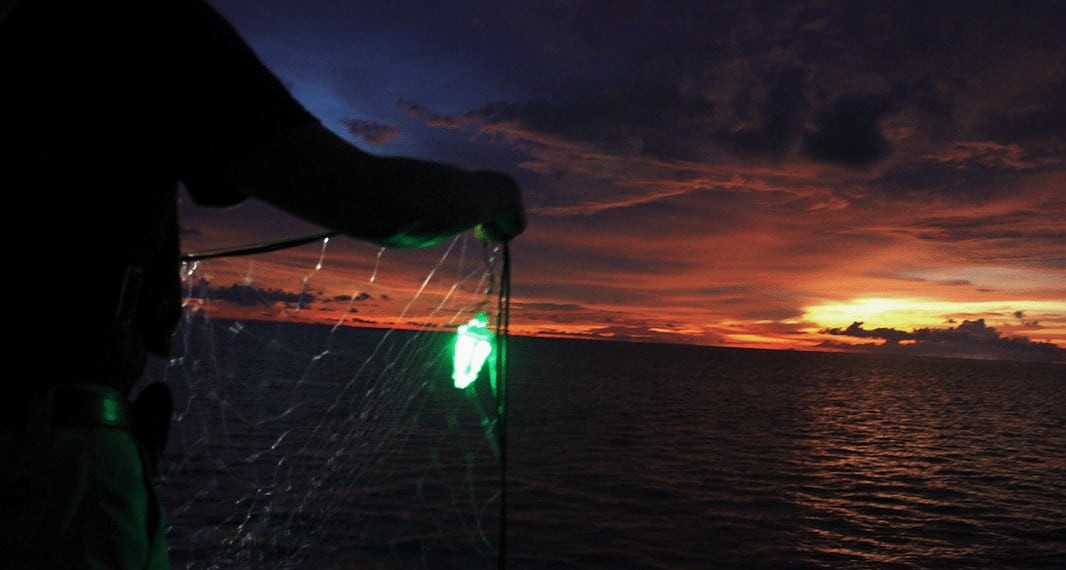Scientists have found that using lighted nets greatly reduced accidental bycatch of sharks, rays, sea turtles and unwanted finfish.
The researchers found that lighted gillnets reduced total fisheries bycatch by 63 percent, which included a 95 percent reduction in sharks, skates, and rays, an 81 percent reduction in Humboldt squid, and a 48 percent reduction in unwanted finfish, while maintaining catch rates and market value of target fish.
The results of the study were published in the journal Current Biology.
The researchers attached green LED lights every 10 meters/33 feet on gillnets along the Pacific coast of Baja California Sur, Mexico and were surprised to find that the lighted nets nearly eliminated bycatch of sharks, skates, and rays, which have declined globally due to bycatch and illegal fishing.
Moreover, the illuminated nets reduced the time it took fishers to retrieve and disentangle the nets by 57 percent, making this technology attractive for fishers looking to increase their efficiency independently of any concern for bycatch. This resulted from fishers needing to remove fewer entangled animals in the illuminated nets, which included considerably fewer turtles, sharks, skates, rays, squid and small finfish, which can be time consuming, difficult, and even dangerous to remove from nets.
In practical terms, this means that fishers can save more than an hour per trip when fishing with illuminated nets, which can also help improve the quality of their catch.
According to Jesse Senko of Arizona State University and lead author of the study:
“These results demonstrate that the potential benefits of illuminated nets extend well beyond sea turtles, while demonstrating the strong promise for net illumination to mitigate discarded bycatch in similar coastal gillnet fisheries throughout the world’s oceans.”
Hoyt Peckham, a co-author on the study and Director of Small-scale Fisheries at the Wildlife Conservation Society, said:
“Gillnets are ubiquitous because they are inexpensive and catch everything that passes them. This work is exciting because it provides a practical solution increasing gillnets’ selectivity and avoiding their bycatch. Emerging technologies should help us incorporate this kind of lighting into gillnet materials so that adopting this solution will become a no-brainer for fishers.”
John Wang, a study co-author and Fisheries Ecologist at NOAA Fisheries’ Pacific Islands Fisheries Science Center in Honolulu said:
“Making life easier for fishers by reducing the amount of time untangling bycatch is equally essential as reducing the bycatch biomass in nets. It is important for fishers to know that there are tangible benefits for them. This is critical for the adoption of such technologies by the fishing industry.”

